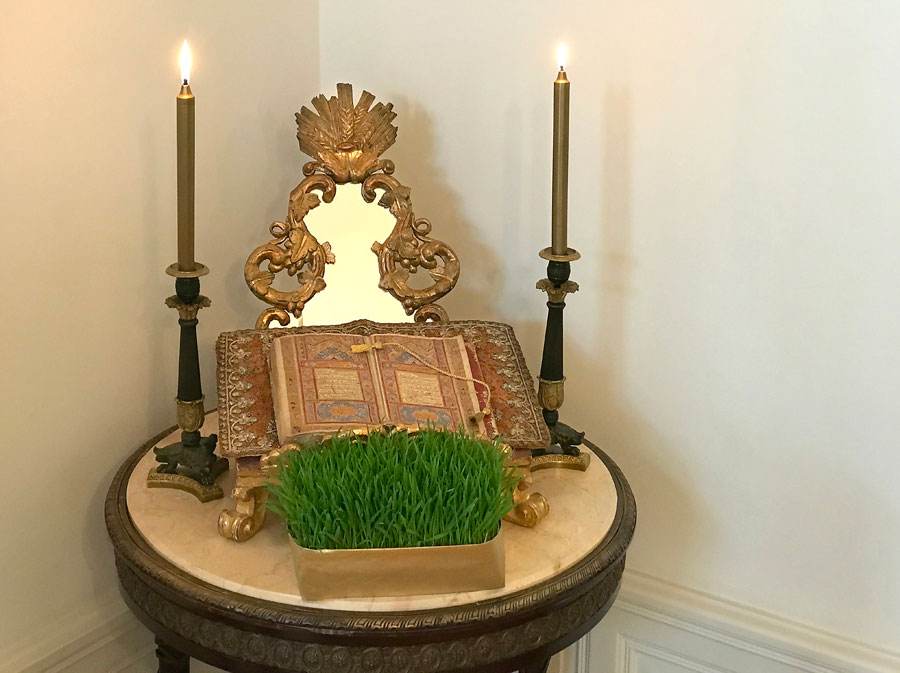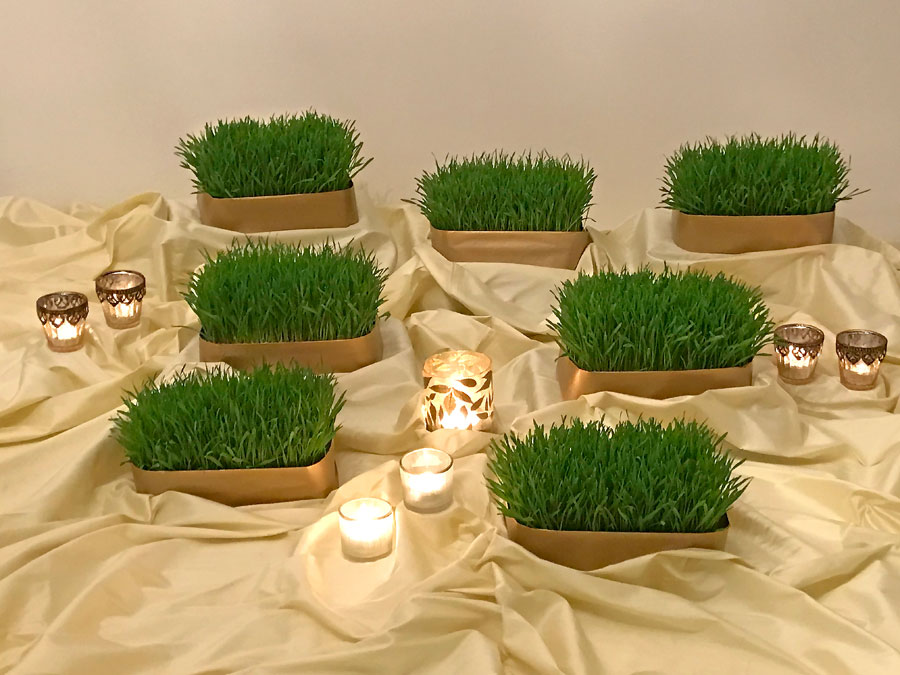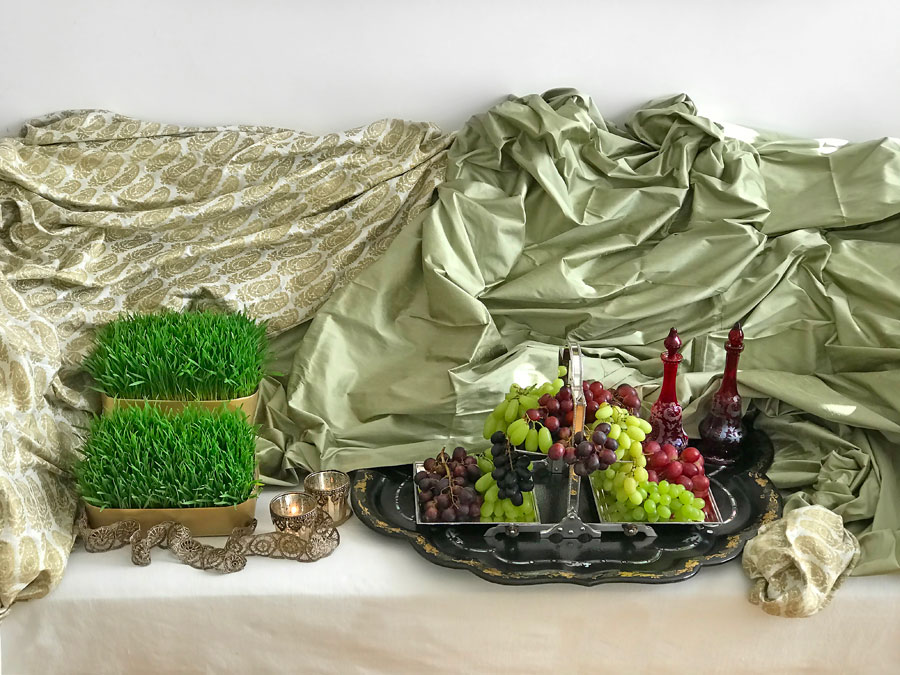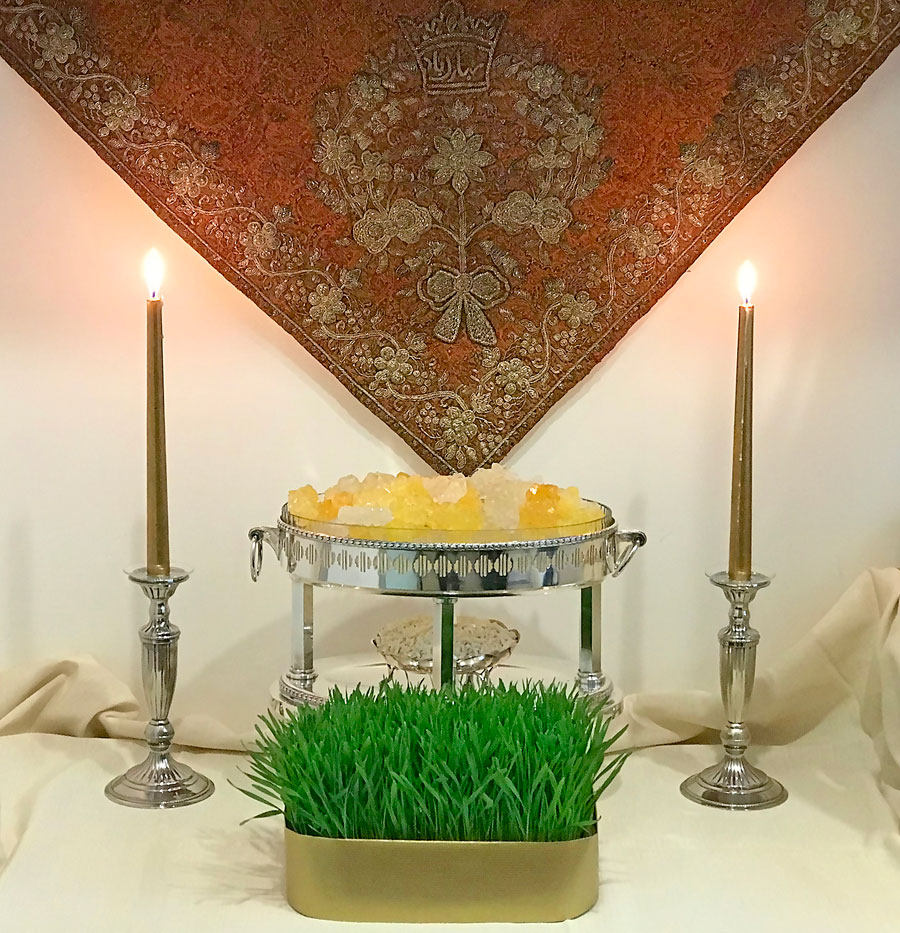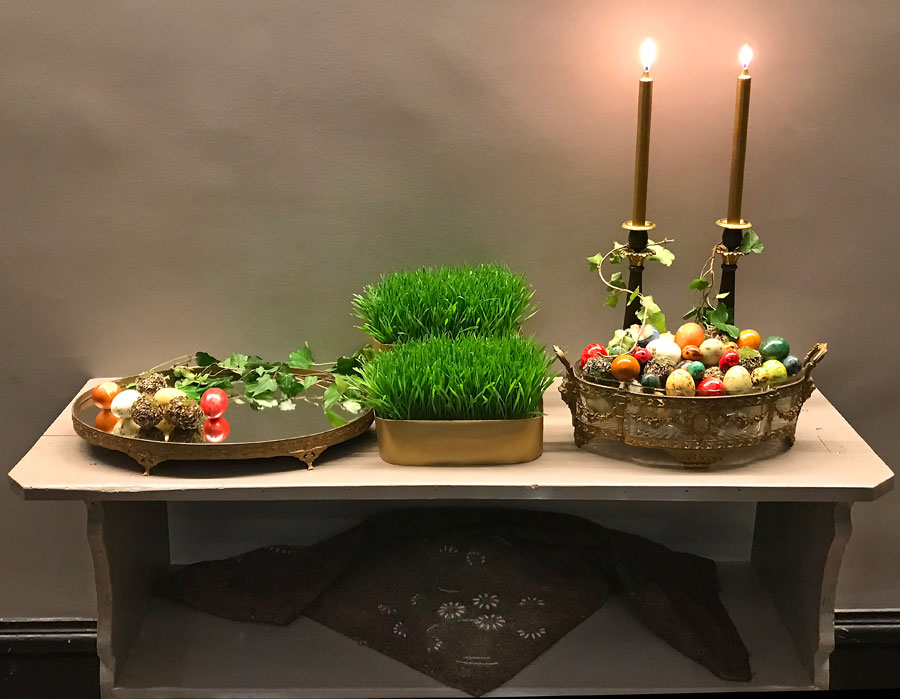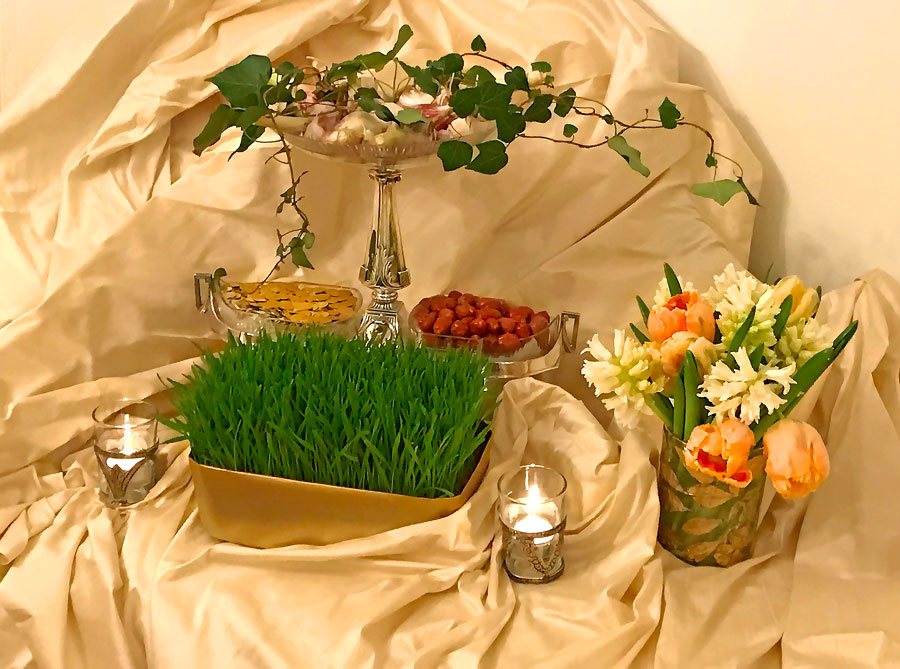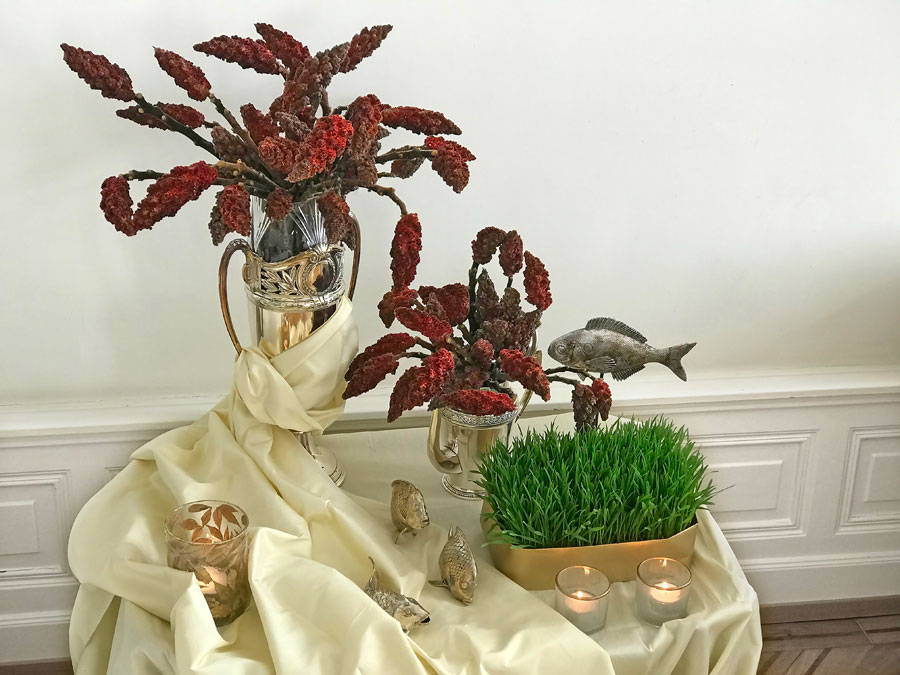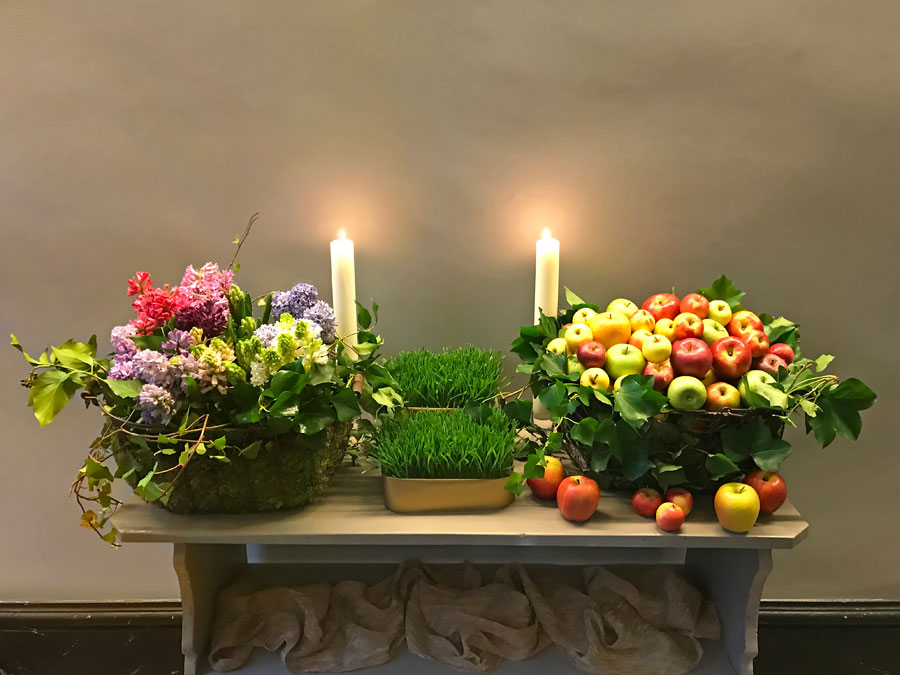Nowruz 2020
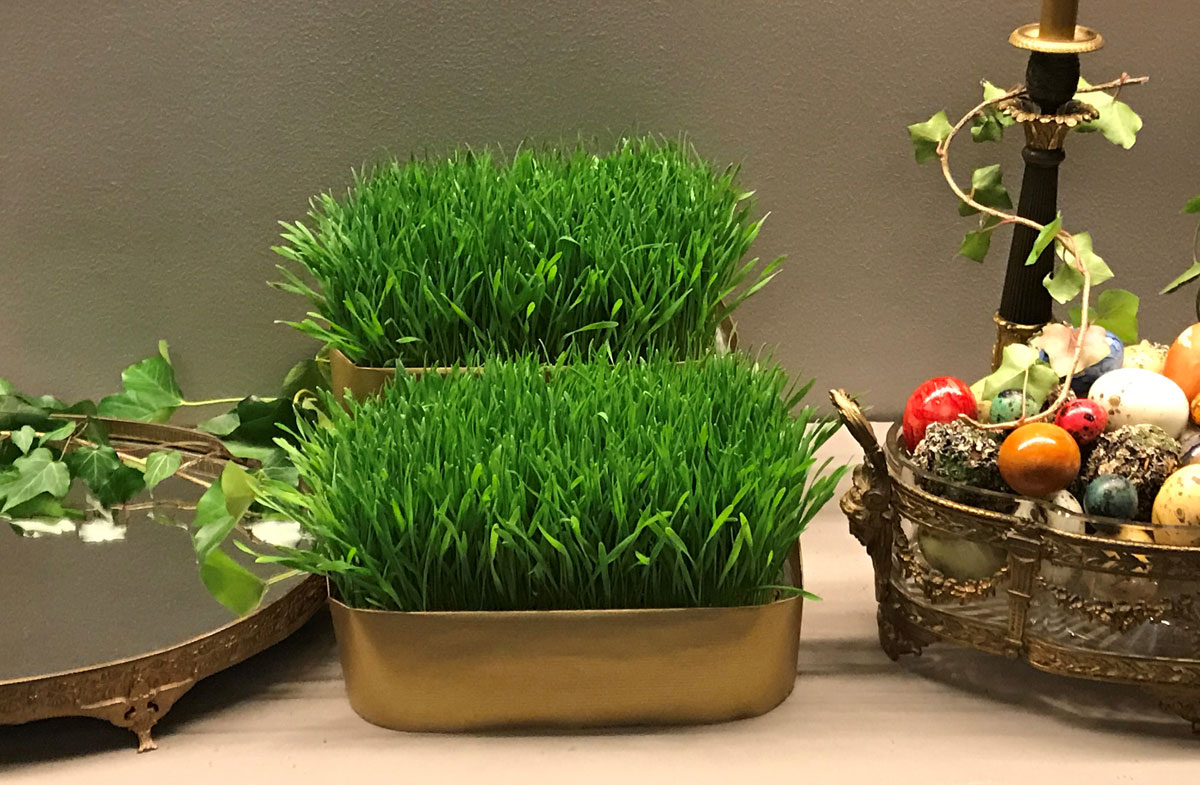
Regrettably, as a result of the global coronavirus outbreak, the majority of Nowruz gatherings and celebrations around the world were cancelled. During these challenging times, by discussing the various revered symbolic elements of the sofreh-ye haft sinn on the book’s social media, SOFREH: The Art of Persian Celebration aspired to bring good fortune, joy, colour and beauty into the homes of those who celebrate Nowruz. The importance of the figure seven (haft) and the letter “s” (sinn) is visible in the presentations, and as germinated wheat (sabezh) is a vital and vivid part of the sofreh-ye haft sinn, it is included in all the arrangements created around the symbolic elements.
Click on the images below to enlarge
The focus of this initial image is the treasured, antique, hand-written Qur’an which is opened on an illuminated page and placed on an attractive antique book-stand. For Muslims the Qur’an is included in the sofreh to provide guidance and protection. In some families a copy of the divan-e Hafez, a work of fourteenth century poetry, is displayed. The flames and the mirror symbolize light and reflection, respectively. A block of sabzeh enhances the beauty of the arrangement.
Germinated wheat (sabzeh) is a significant part of the symbolic elements of the sofreh-ye haft sinn. Besides, in this image the emphasis on the importance of number seven (haft) is particularly evident. The focus is on seven blocks of sabzeh, the essence of this spring festival (Nowruz) and a symbol of growth and rebirth. Seven flames represent light and illuminate the arrangement. The background of the composition is elegantly and lavishly covered with ivory raw silk.

